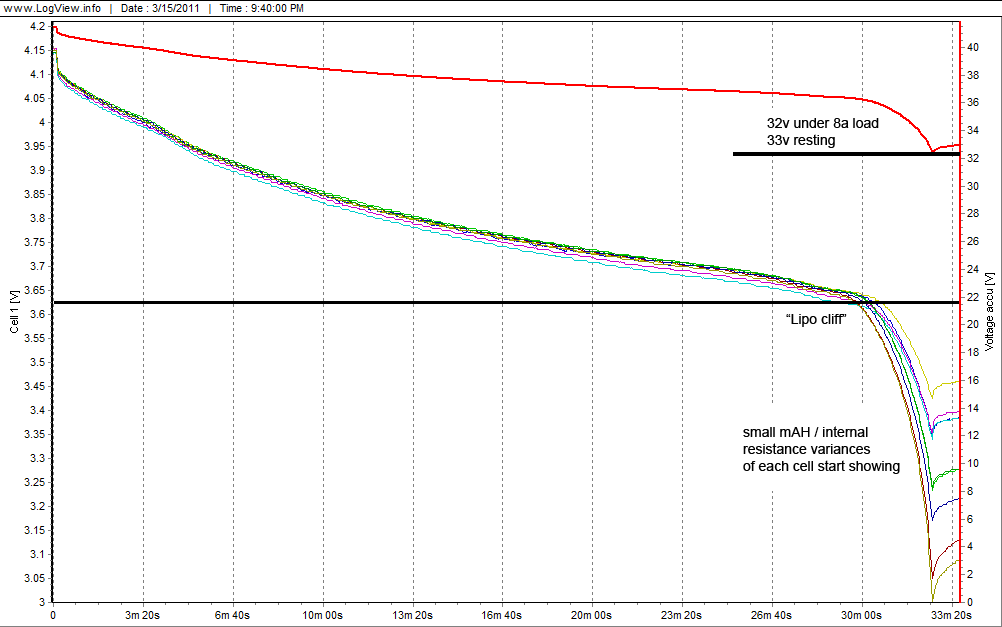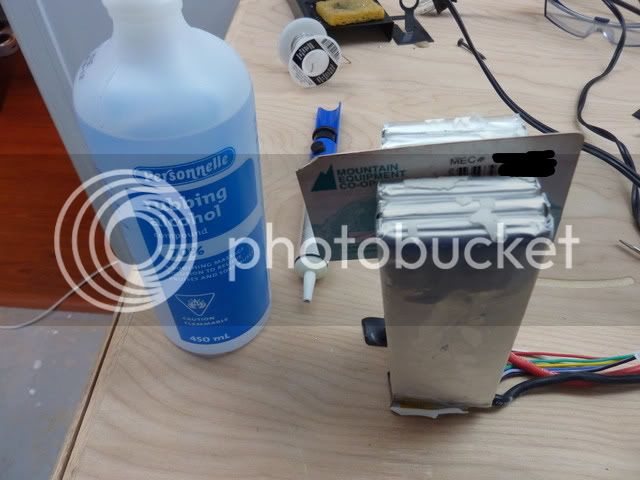10 kW
I recently put together a bike that uses three 5 amp-hr 6s LiPO batteries in series that feed Lyen's 18 FET controller. I have a DP CA on this set up. The controller has a wire that requires battery voltage to turn on the controller. I wired that to an ON-OFF switch that was on the 9C throttle I bought with the motor. I have been using the switch to turn the controller off, assuming there was no drain on the batteries when the controller was off.
I had ridden the bike some and had run out about 2 A-hr, a little less than half the total capacity . I parked the bike and did not get on it again for two weeks. I had previously recharged the batteries about every time it was ridden, but not this time. Yesterday I used the switch to turn on the controller and the CA would not even register. Took the batteries out and put them on the charger and got a "low voltage warning", which for my charger means you can't charge them in LiPO mode. I measured the voltage from the batteries and it was 6v ("Oh $^#@ !") out of the expected nominal 22.5 or so for each pack.
The bike is my son's and he is a forgetful boy. It is possible he let it turned on from an earlier ride and then later turned it off (too late). Or perhaps someone accidentally turned it on. Or maybe I accidentally reset the A-hr meter on the CA without charging.
Is there any way the controller could have drawn down the batteries with the switch off in this amount of time? I have not really paid attention to whether or not simply leaving the battery connected but with the switch off is using energy somehow. Again, the switch is used to send battery voltage to the lead to turn on the Lyen controller. I suspect the controller does not draw current if there is no power to this lead and that something else happened.
I had ridden the bike some and had run out about 2 A-hr, a little less than half the total capacity . I parked the bike and did not get on it again for two weeks. I had previously recharged the batteries about every time it was ridden, but not this time. Yesterday I used the switch to turn on the controller and the CA would not even register. Took the batteries out and put them on the charger and got a "low voltage warning", which for my charger means you can't charge them in LiPO mode. I measured the voltage from the batteries and it was 6v ("Oh $^#@ !") out of the expected nominal 22.5 or so for each pack.
The bike is my son's and he is a forgetful boy. It is possible he let it turned on from an earlier ride and then later turned it off (too late). Or perhaps someone accidentally turned it on. Or maybe I accidentally reset the A-hr meter on the CA without charging.
Is there any way the controller could have drawn down the batteries with the switch off in this amount of time? I have not really paid attention to whether or not simply leaving the battery connected but with the switch off is using energy somehow. Again, the switch is used to send battery voltage to the lead to turn on the Lyen controller. I suspect the controller does not draw current if there is no power to this lead and that something else happened.



